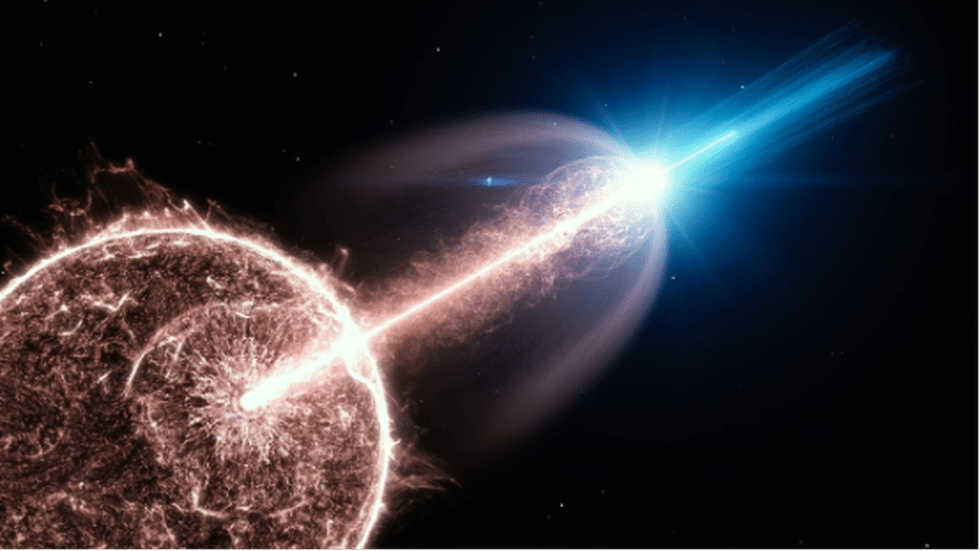About Gamma Ray Burst (GRB):
- GRBs are short-lived bursts of gamma-ray light, the most energetic form of light.
- GRB emits more energy in a few seconds than our Sun will emit in its lifetime and has two distinct emission phases:
- the short-lived prompt emission (the initial burst phase that emits gamma-rays), followed by a long-lived multi-wavelength afterglow phase.
- The shortest GRBs likely mark the collision of two compact stellar remnants called neutron stars, and the longest bursts are thought to arise when a massive, rapidly spinning star collapses to form a black hole.
- When a GRB erupts, it is briefly the brightest source of cosmic gamma-ray photons in the observable Universe.
What are Gamma Rays?
- Gamma rays have the smallest wavelengths and the most energy of any wave in the electromagnetic spectrum
- They are produced by the hottest and most energetic objects in the universe, such as neutron stars and pulsars, supernova explosions, and regions around black holes.
- On Earth, gamma waves are generated by nuclear explosions, lightning, and the less dramatic activity of radioactive decay.
Q1) What is the electromagnetic spectrum?
The electromagnetic (EM) spectrum is the range of all types of EM radiation. Radiation is energy that travels and spreads out as it goes – the visible light that comes from a lamp in your house and the radio waves that come from a radio station are two types of electromagnetic radiation. The other types of EM radiation that make up the electromagnetic spectrum are microwaves, infrared light, ultraviolet light, X-rays and gamma-rays.
Source: ‘Monstrous’ gamma-ray burst brightest seen since ‘human civilization began’
Last updated on June, 2025
→ UPSC Notification 2025 was released on 22nd January 2025.
→ UPSC Prelims Result 2025 is out now for the CSE held on 25 May 2025.
→ UPSC Prelims Question Paper 2025 and Unofficial Prelims Answer Key 2025 are available now.
→ UPSC Calendar 2026 is released on 15th May, 2025.
→ The UPSC Vacancy 2025 were released 1129, out of which 979 were for UPSC CSE and remaining 150 are for UPSC IFoS.
→ UPSC Mains 2025 will be conducted on 22nd August 2025.
→ UPSC Prelims 2026 will be conducted on 24th May, 2026 & UPSC Mains 2026 will be conducted on 21st August 2026.
→ The UPSC Selection Process is of 3 stages-Prelims, Mains and Interview.
→ UPSC Result 2024 is released with latest UPSC Marksheet 2024. Check Now!
→ UPSC Toppers List 2024 is released now. Shakti Dubey is UPSC AIR 1 2024 Topper.
→ Also check Best IAS Coaching in Delhi
























